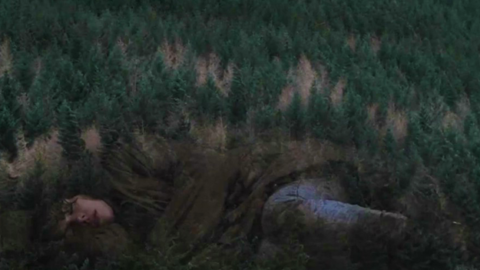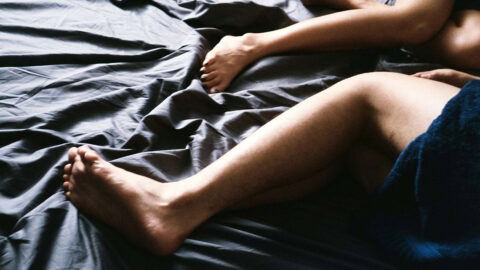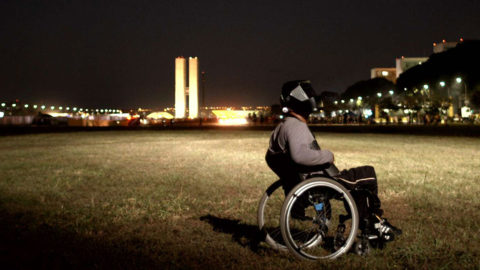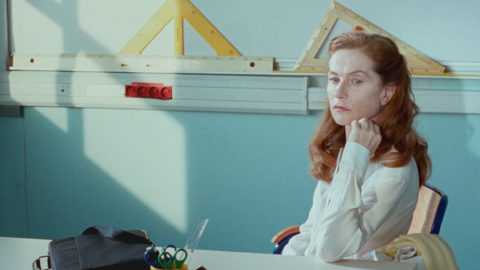Locarno Interview: Richard Billingham
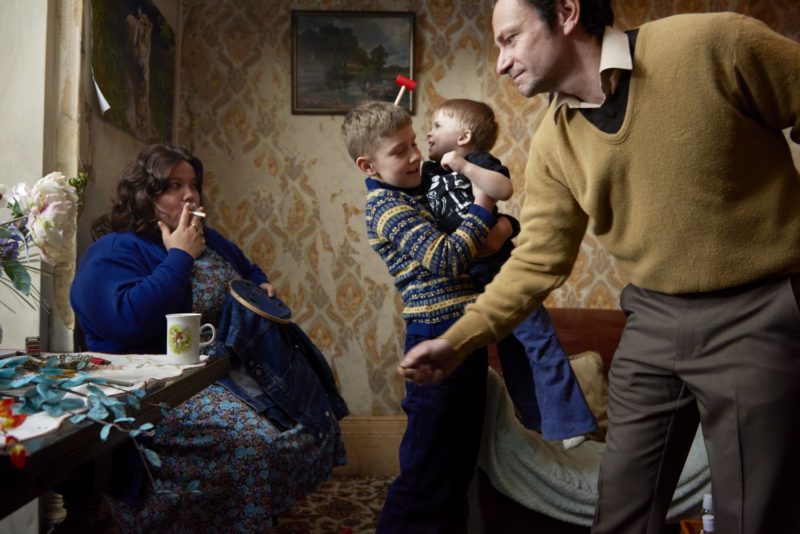
Known since the mid-1990s for his gritty autobiographical portraits of family life in a Birmingham council flat, British photographer Richard Billingham premiered his first feature film this week in Locarno. As with Billingham’s photographs, RAY & LIZ employs a painterly and meticulously framed formal register to portray his family over two decades. It is a nuanced memoir that eschews melodrama in favor of the kind of photographic detail that you can feel with your fingertips (including a meal routine that surely wins the award for best condiment-based sandwich in cinema). The actors (Justin Salinger and Ella Smith) playing Billingham’s parents, Ray and Liz, look startlingly similar to their real-life counterparts who we see in a photograph bookending the film.
Differing from his photography, including Billingham’s first photo book Ray’s a Laugh (1996), RAY & LIZ moves between three distinct time periods, opening with the latest and saddest, in which Ray drinks homebrew alone in his tower-block bedroom. Resembling Billingham’s portraits from the early 1990s when he shared this fly-infested flat with his father, the scenes feature a subdued soundscape and a sense of extended duration that contrast with the film’s more turbulent episodes. Jumping back a decade to around 1980, we visit Ray and Liz, already feeling the socioeconomic and emotional effects of Thatcherism’s forced redundancies. Behind the mushy-pea green door of their one-up-one-down terraced house, we meet Billingham’s younger brother Jason—then three years old—and a malevolent lodger who tricks Billingham’s ill-fated Uncle Lol into drinking a crate of spirits hidden in the basement. Upon finding Jason neglected and Lol grotesquely drunk (the lodger is nowhere to be seen), Liz savagely reprimands Lol. All is witnessed by Jason, their pet dog, and a tape recorder that Jason and Richard play with.
Witnessing establishes itself as a central theme in the film, illustrating the documentary term “fly on the wall” all too vividly, as flies, dogs, a rabbit, and several snails find themselves living with and observing the family. Set in the mid-’80s when Jason and Richard are in secondary school, the third era comprises a series of vignettes illustrating Jason’s experience of neglect and the family’s spiraling problems. Eschewing both the preaching and sensationalism so often found in social realist memoirs, RAY & LIZ’s is measured in its characterization. The social worker who announces that Jason will be taken into foster care is more pragmatic than villainous. Liz’s reaction is equally understated, and Jason’s neither overly heroic nor weak. Subtle too is the film’s historical and regional detail, achieved most obviously through set design closely based on Billingham’s photographs. Sound and music are used to further orient us. We hear Musical Youth and Fine Young Cannibals—bands that originated in Birmingham—while racist jokes made in passing by Uncle Lol or Liz recall racial tensions in that region and era.
Film Comment spoke with Billingham in Locarno, where RAY & LIZ had its world premiere in the Concorso Internazionale. The film screens this fall in the New York Film Festival at the Film Society of Lincoln Center.
Let’s begin by going right back to where you started, taking photographs.
I grew up in the Cradley Heath area of Birmingham, first in a terraced house and then in a high-rise apartment block. I wasn’t happy in the apartment because I felt stuck, up in the sky. People pissed in the lift, and the walls were covered in racist graffiti. My parents had a little camera, but it was so expensive to get film developed that I wasn’t allowed to use it. They might have one film a year processed. We had a cassette tape recorder that I used a lot. Audio cassettes were quite cheap then. I saved up to buy that tape recorder when I was nine or ten. The one in the film is just like it.
I was 19 when I got my first camera. I originally studied painting and I bought that camera to make some preparatory studies of my father. I was living with him at the time and wanted to paint his portrait. I saw him as this spectacle each day and I wanted to paint the tragedy of his situation. He posed for me but didn’t want to hold poses for long periods—so taking photographs was a good way around this. I started to make narrative portraits of him, making use of the few things in his room—the bed and its headboard, the electric fire, the mirror and window.
We see these objects in the film.
Yes. To film Ray in his bedroom, I drew from one of my favorite early photographs. It shows Ray in bed, under the blankets, with the headboard forming a halo around him. It looks more like he’s in a landscape than a room. It’s as if he’s a landscape himself.
Gradually your photos became works themselves, rather than studies for paintings?
Yes, I switched to photography. The early photographs I took were in black and white because I could develop them at college—we see one of them at the beginning and end of RAY & LIZ. After graduating, and without access to a darkroom, I switched to color because it was cheaper. The photographer Julian Germain saw my photographs and encouraged me to exhibit and publish them. At the time, I was working in Kwiksave. They’re all analogue, my photographs. Making RAY & LIZ, I wanted to use analogue too. 16mm film makes things into shapes and textures, and doesn’t give you too much data. It also requires a level of economy—you have to get the shot in one or two takes.
Were you watching film as you grew up?
Yes, both film and TV. When I was a kid, the TV was switched on as soon as you arrived home, like a light switch. We used to call the TV the “life support machine.” I loved Laurel & Hardy, Charlie Chaplin, and Harold Lloyd. I saw Robert Bresson’s A Man Escaped. It’s largely shot in one room, a cell, and Bresson makes it interesting by working with the space at hand. He uses a voiceover, but in RAY & LIZ I wanted to use other means to explore what people do when they’re on their own and relatively confined. The time you feel this most is when Ray is lying in bed or drinking alone. Of course, in some of the film’s sections, people aren’t on their own because all the pets and pictures on the walls seem to be watching them. I imagined that the animals have little time capsules in their cages, recording what’s going on around them.
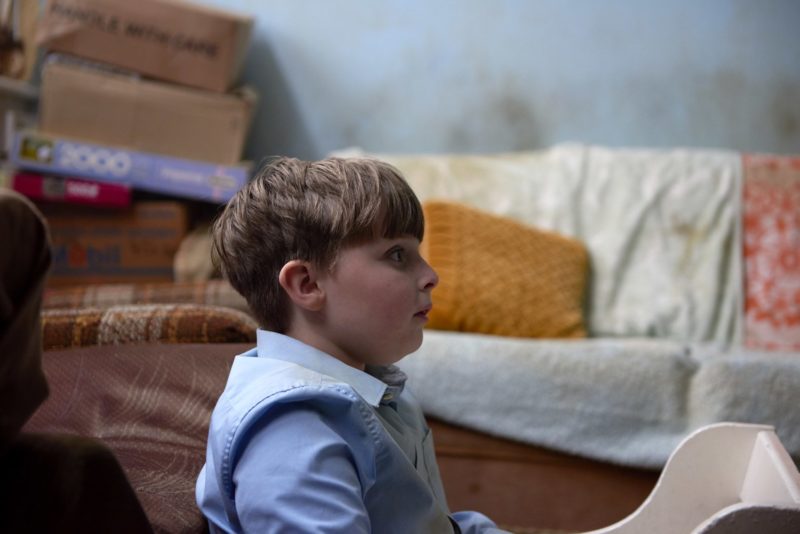
And your character and Jason’s character witness a lot too. The tape recorder is also a witness, isn’t it? But crucially, when Liz hears the recording in which the lodger is being so cruel, she destroys the tape.
Yes, my mother used to do that. Some kind of erasure. The scene in which Liz unravels the tape ribbon was a visual way for me to describe her thoughts.
Impulses to record and erase or destroy compete throughout the film. When a letter arrives from Jason’s school, the dog pees on it and Ray folds it up—unopened—and stuffs it into a drawer.
I kept and still have many of the school reports and documents from social services from the time Jason was taken into care. I also have about 20 audiotapes—the ones that weren’t recorded over, unraveled or lost. They were helpful when I was writing the film.
When and why the decision to make this film?
I had the idea to make this film when I was still living with Ray. I thought of his situation as a film from the outset, and wanted to film him as a way to provide a backstory for my series of photographs.
Can you speak a bit about the writing process for RAY & LIZ?
I wrote RAY & LIZ over a period of five or six years. Its basic story had been in my head for years before then too. I talked a lot with Jason about his memories of neglect. And I used the photographs, paper records, and tapes as aide-memoires. I remember sitting in a train when I wrote Uncle Lol’s story, mapping out gestures, body language and even the way each person sits. When I write scenes, I focus on what things look like. And then I cut and paste them into an order and add dialogue.
And preparations for shooting?
We filmed in the actual apartment building where I grew up. The furniture and wallpaper are replicas of those you see in my photographs. We shot for about six weeks. Fingerprints and textures are very important to me, and both the set design and camerawork reflect that. Texture was important for Tarkovsky. He filmed water especially well—the surfaces of puddles or lakes, people’s wet clothes, that sort of thing. You feel it. The sandwiches Jason makes for himself, for example—you can feel the way he squishes the bread between his fingers.
So you were working with your photographs and from memory to design the set. What about the film’s sound design?
I think I have more of a visual memory and it’s [producer] Jacqui [Davies] who supplied ideas for the film’s musical soundtrack. We are the same age. She suggested particular songs that become vehicles in the film, transporting us to Birmingham in the ’80s.
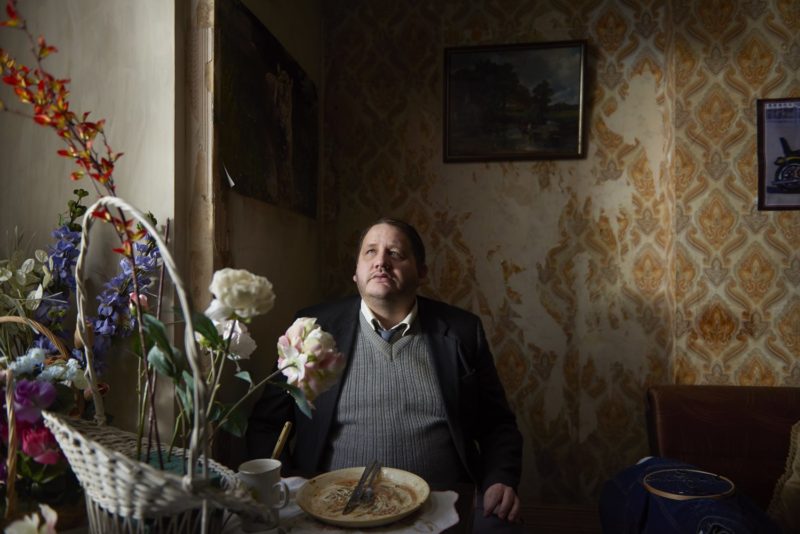
How was it to work on RAY & LIZ with Daniel Landin, its director of photography?
We have a similar sense of composition. We both went to art school; I think our visual sensibility is pretty aligned. We’d talk in the car as we drove to the set to shoot, discussing how to compose each shot. I showed Daniel many of my photographs from the ’90s, to give him a sense of their light and mood, and we had them to hand during production, to get certain textures and juxtapositions of objects. The set design was important because it determined how the shots were set up. Each shot was like an extrapolation of the set. We’d move the camera around, and I’d sometimes get behind it too to check the framing.
You use a tight, 4:3 ratio.
Yes, this aspect ratio suits the architecture of the apartment and house where we were filming. The room sizes are approximately 4:3, as is the apartment window, and the old TV in the house. The film’s ratio gives it a sense of containment—confinement even. I experimented with panoramic shots in the rooms, but they just didn’t work. When Ray is alone in his bedroom, the 4:3 really works. I think Bresson’s A Man Escaped was shot in 4:3, and Andrea Arnold’s Fish Tank.
The ratio helps add to the atmosphere of claustrophobia, without anything needing to be said by the characters. The whole film seems to operate by this logic, with spaces speaking as much as human protagonists. When there is dialogue, it’s often more expressive than informative—outbursts of anger from Liz, or appeasement from Jason. The scene in which Jason arrives home, having been missing for some time, and is hardly noticed by his parents… that spoke loudly.
I prefer to show and not tell. I’m not really interested in making a polemic. Maybe it’s my art background… I don’t want to make things too obvious—be it in a film or a gallery exhibition. I want to make people think, but not tell them what to think. If you tell people what to think, it’ll put them off.
After a screening, someone noted the recurring sense of falling in the film. Jason lets ornaments and toys fall from the apartment window. Ray seems to have fallen into ever-deeper despair, as if in reverse relation to the family’s move upwards into the high-rise. Uncle Lol and Ray stumble and fall when they’re drunk. The family allowance drops when Jason is taken into care. I liked this observation.
I didn’t think in exactly those terms, but yes. Another thing is light switches. Did you notice? In everyday life, people switch lights on and off all the time, but it’s rarely seen in film. Andrey Zvyagintsev is an exception. In his films, scenes start in a dark scene and all of a sudden someone puts the light on. It transforms the space, and it also slows us down, inviting us to notice everyday gestures. I was looking for ways to film Ray and Liz’s days. The small things they did, the textures, the fingerprints. I asked the actors to pass things like cigarettes, or mugs of tea, more slowly.
Each character has his or her own set of gestures, forming a kind of ensemble. But, like your photo books, Ray seems pivotal. We get to know him in the film in a different way than through photographs, because we meet him in earlier and later periods of his life via flashes forward and back. Earlier, he’s resigned and almost submissive towards Liz. When Liz has left him, he seems lost.
The film begins and ends with Ray, so I feel like he’s the central figure. I imagine that he did a lot of thinking, alone in that bedroom. I picture him as a kind of philosopher in there, or a hermit, reflecting on his life. To transmit this in the film, I really focused on his gestures—refilling his glass, lighting a cigarette. Montaged together, these gestures seem to carry a lot of significance. At the same time, the film is rather like a collective memory, a family photograph album.
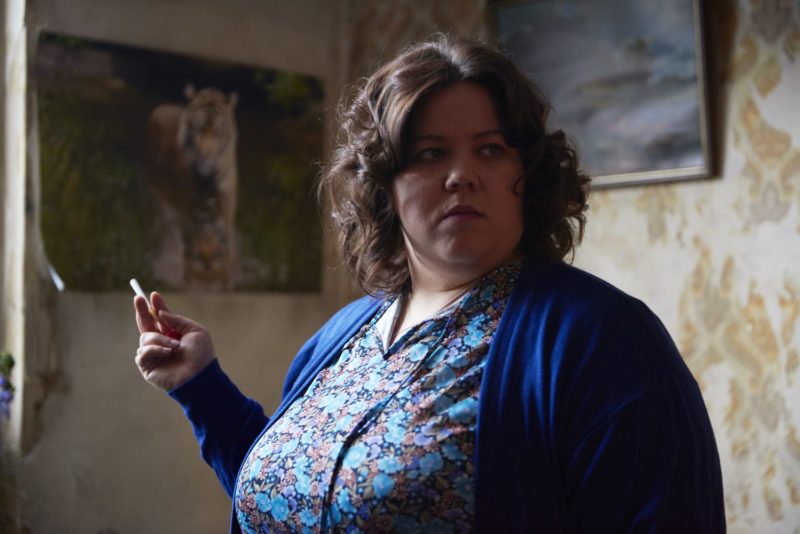
Did you have a shot list?
No. Each day, we would experiment with camera positionings and just see what seemed interesting. Working with close-ups, the slightest detail like the twitch of a finger can become very interesting and expressive.
And what’s next? You’re living in Swansea now?
I’m excited by 8mm color film. I’ve been filming the Gower peninsula landscape around Swansea, zooming into the distance so that the film grain becomes part of the landscape, and creates a painterly, pictorial image. I’ve been filming with an 8mm camera for about a year now. Had moving image been available when I was young, I probably would have used it. Or had phone cameras been around… You work with the technology and the means that you’ve got. I bought a video camera in the nineties and made my documentary Fishtank [1998]. But I’m enjoying filming on 8mm now. I’m not sure whether the project will develop into a screening or an installation piece—perhaps both. I wish Kodachrome was still available, but I’m having to use color neg. Kodachrome’s color was amazing.
It’s almost startling now, isn’t it, when you see colors in films shot on Kodachrome.
I collect found 8mm film. I’ve got about five hours of footage of British birds, filmed by this man who travelled around Britain filming 145 types of bird. It’s shot on Kodachrome, and dates from the 1970s, I’d guess. The films are amazing to look at. Sometimes the camera turns towards a sunset or something, but you never see the filmmaker. You don’t see a car, or anything to date it. It’s a visual feast. You don’t see a house. Nothing. It’s like a dream.
Do you buy old film reels?
I’ve bought a lot of amateur footage made in zoos. I want to digitize it and make a montage of various zoo films. There was a zoo near where I grew up—the one Jason visits in the film. You see him taking the cable car and visiting the giraffes there. It was a massive treat to visit that zoo—the highlight of the year. Jason stole money to go there, and we see that in RAY & LIZ. All these archives of old film are sold online. It’s the equivalent of a family album. You come across whole batches of family holiday footage. And within them, there’s often a reel shot at a zoo. I’ve found zoos in Germany and America, not just Britain. I thought you could get the footage and look for different things. There’d be different themes that would emerge. You could make a montage of birthdays from all over the world, or weddings, christenings.
Maybe not funerals…
No, that’s true, I guess you wouldn’t film that, would you!
Becca Voelcker is a PhD student in Film and Visual Studies at Harvard University, and a freelance film critic and programmer.



